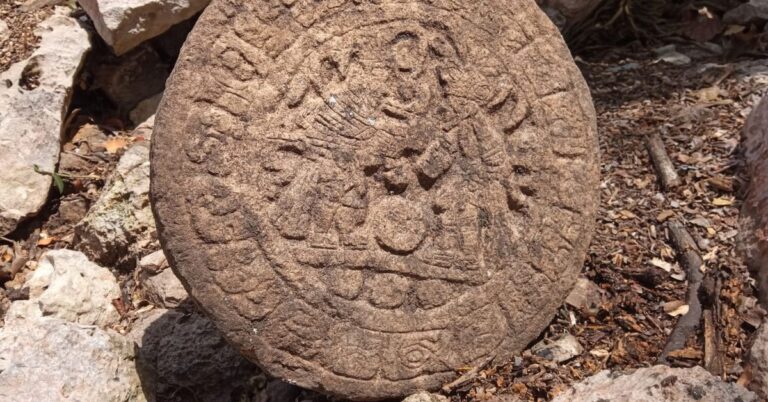MEXICO CITY, April 11 (Reuters) – A stone scoreboard used in an ancient soccer-like ball game has been discovered at the famous Mayan Chichen Itza archaeological site on Mexico’s Yucatan peninsula, archaeologists said this week.
The circular piece, which measures more than 32 centimeters (12.6 inches) in diameter and weighs 40 kilograms (88 lb), shows hieroglyphic writing surrounding two players standing next to a ball, according to a statement from the National Institute of Anthropology and History (INAH) of Mexico ).
“At this Mayan site, it is rare to find hieroglyphic writing, let alone a complete text,” said Francisco Perez, one of the archaeologists coordinating the investigations at the Chichanchob complex, also called Casa Colorada.
The stone, believed to be a scoreboard, dates from between 800 AD and 900 AD.
The ball game is a traditional practice of the Mesoamerican peoples and is believed to have significant rituals.
INAH researchers are now preparing to take high-resolution images of the text and iconography for detailed study, while preparing it for conservation.
The Chichen Itza complex, declared a World Heritage Site by UNESCO, is one of the main archaeological centers of the Mayan civilization in the Yucatan Peninsula. According to official data, almost 2 million people visit the site every year.
Reporting by Manuel Carrillo and Nina Lopez; Writing by Marion Giraldo and Isabel Woodford; Editing by Rosalba O’Brien
Our Standards: The Thomson Reuters Trust Principles.
